How can podiatrists help with peripheral neuropathy?
The inability to recognise specific sensations at the end of the body is associated with a condition called peripheral neuropathy. Allied to cancer treatment this makes the condition an unfortunate side effect.
The following symptoms arise;
- Numbness or tingling;
- Diminished or absent temperature sensitivities
- Reduced sensations to include
temperature,
sharp and blunt,
light touch,
vibration.
- Altered muscle strength can lead to imbalance and an increase due to loss of ground awareness.
Podiatrists can assist patients with peripheral neuropathy in two ways. Recognising the extent of numbness by testing sensations with special fibres and providing advice how to care for the foot. Patients who have other risk factors such as diabetes mellitus and obesity, as well as those with vitamin B12 anaemia are at a higher risk of developing peripheral neuropathy. For example, some cancer drugs affect blood sugar levels of diabetic patients which can affect the nerves further.
Burning
 It is relatively common for patients to complain of a burning sensation in their hands and feet and some have found this to be so severe that they have had to take morphine lollipops to help manage the pain. Symptoms may include a sensation as if wearing a glove or stocking that can extend to the knee. The severity depends on the dosage, frequency and length of each treatment cycle. peripheral neuropathy negatively affects awareness of what position each joint is in. This is called proprioception and the messages to the brain are interrupted affecting how patients move. Mobility associated with walking is affected as the patient can’t walk comfortably and abnormal pressure is created. This increases the risk of neuropathic ulceration and infection developing. Your podiatrist will be able to monitor the risk, provide support or padding to reduce the ulcer forming and advice on how to handle the burning sensation.
It is relatively common for patients to complain of a burning sensation in their hands and feet and some have found this to be so severe that they have had to take morphine lollipops to help manage the pain. Symptoms may include a sensation as if wearing a glove or stocking that can extend to the knee. The severity depends on the dosage, frequency and length of each treatment cycle. peripheral neuropathy negatively affects awareness of what position each joint is in. This is called proprioception and the messages to the brain are interrupted affecting how patients move. Mobility associated with walking is affected as the patient can’t walk comfortably and abnormal pressure is created. This increases the risk of neuropathic ulceration and infection developing. Your podiatrist will be able to monitor the risk, provide support or padding to reduce the ulcer forming and advice on how to handle the burning sensation.
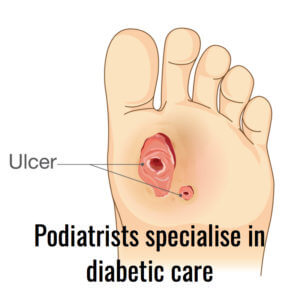
Numbness affect walking patterns
The style of walking changes so that increased pressure results in certain areas on the foot, causing footwear to feel uncomfortable or painful. This might sound strange when numbness is present but not all sensations disappear, creating confusion for the patient. Elderly patients particularly experience such symptoms.
Solutions and help for cancer patients
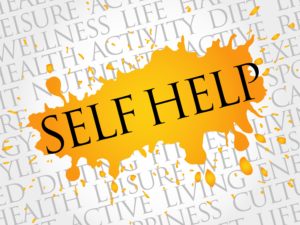 As a simple solution, patients with peripheral neuropathy prefer lightweight sandals with a moulded foot bed. A tight fit can assist with their awareness of balance which often diminishes. The ability for the brain to know where a joint is during activity is known as proprioception without this benefit we fall over. The use of wider footwear can be invaluable in assisting sufferers with pain. The summary below may help
As a simple solution, patients with peripheral neuropathy prefer lightweight sandals with a moulded foot bed. A tight fit can assist with their awareness of balance which often diminishes. The ability for the brain to know where a joint is during activity is known as proprioception without this benefit we fall over. The use of wider footwear can be invaluable in assisting sufferers with pain. The summary below may help
- Highlight if shoes are too tight/loose
- Put memory foam into footwear to aid cushioning, particularly if soles are too hard
- Add anti-friction materials such as fleecy web on the feet
- Use deflective pressure padding on areas of high pressure eg the balls of the feet or inserts (orthotic) to provide and improve foot stability
- Select different shaped shoes or different depth toe box to cope with new deformities and reduce pressure on skin
- Select seam free shoes and hosiery
Falls
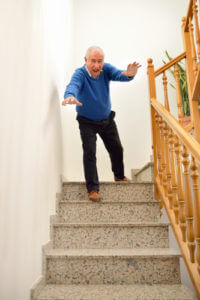 Patients affected with peripheral neuropathy are more likely to suffer from falls and injuries as the foot and body hasn’t had time to adapt to the neurological changes. Equally patients are more susceptible to neuropathic ulcerations. In these cases, it may be necessary to suspend or reduce the dosage of anticancer treatment in order to mitigate the risks associated with these side effects[1]. Vitamin B12 deficiencies have been found to increase the onset and severity of chemically induced peripheral neuropathy while supplements of vitamin B12 can be very beneficial in reducing the pain felt.
Patients affected with peripheral neuropathy are more likely to suffer from falls and injuries as the foot and body hasn’t had time to adapt to the neurological changes. Equally patients are more susceptible to neuropathic ulcerations. In these cases, it may be necessary to suspend or reduce the dosage of anticancer treatment in order to mitigate the risks associated with these side effects[1]. Vitamin B12 deficiencies have been found to increase the onset and severity of chemically induced peripheral neuropathy while supplements of vitamin B12 can be very beneficial in reducing the pain felt.
Shoe & Sock Selection
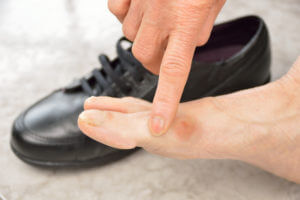 Patients who have lost sensation will tend to wear shoes that are too small, in order to be able to feel the shoe on the foot. They also wear the wrong shape shoe evidence by deformities forming and exacerbating problems. Tight shoes will cause nail damage and ulcerations. Nails thicken and cause nail be compression which can become infected. Ulcerations are breaches in the skin that fail to heel and lead to deep holes.
Patients who have lost sensation will tend to wear shoes that are too small, in order to be able to feel the shoe on the foot. They also wear the wrong shape shoe evidence by deformities forming and exacerbating problems. Tight shoes will cause nail damage and ulcerations. Nails thicken and cause nail be compression which can become infected. Ulcerations are breaches in the skin that fail to heel and lead to deep holes.
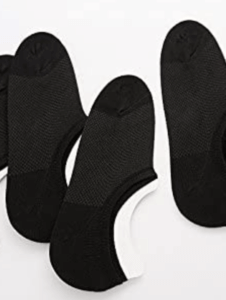
Bamboo fibre or rich cotton socks help improve comfort and reduce shearing. Bamboo fibre socks can help with moisture management, preventing both drying out and moisture water logging the skin. Heat control management with socks helps with air circulation preventing the foot from overheating helps, also reducing the risk of hand foot syndrome. Reducing friction and anti bacterial infection can be assisted due to the bacteriostatic bio-agent, Bamboo Kun.
Checking shoe shape
The principal of good podiatry is to prevent skin (tissue) damage and this can be achieved with reducing pressure from poorly designed shoes. It is particularly important as patients often start wearing trainer-like shoes in the hope of gaining comfort. Still, patients must first assess the sole of the shoe known as the last. The optimum last shape for the foot is a straight last, which allows the foot to stay in its best position. However, there have a growing trend of shoes and trainers being designed with a semi-curved or curved shape. This can cause the foot to form an abnormal (banana) shaped position and affect normal pressure distribution through the arch and midfoot.
Footwear advice from your podiatrist can minimise the risk of neuropathic ulcerations. This is crucial as ulceration and infection can stop treatment cycles and, due to the delayed healing time of the patient, lead to hospital admissions for treatment and potential amputation. Where ulcerations have already formed, management with surgical debridement and appropriate dressings are important
Please read other articles by Afni Shah-Hamilton (Tiptoe Foot Care)
Read other articles:
Cancer care, feet and podiatry
Five Treatments in Feet Caused by Cancer
Supplementary facts and podiatry from Afni Shah-Hamilton
How can podiatrists help with the toxic effect of medication on nails?
How can podiatrists help with hand-foot syndromes?
How can podiatrists help with Xerosis?
Thanks for reading ‘How can podiatrists help with peripheral neuropathy?’ by Afni Shah-Hamilton
published by Busypencilcase Communications![]()
for

April 2020. Modified March 2021
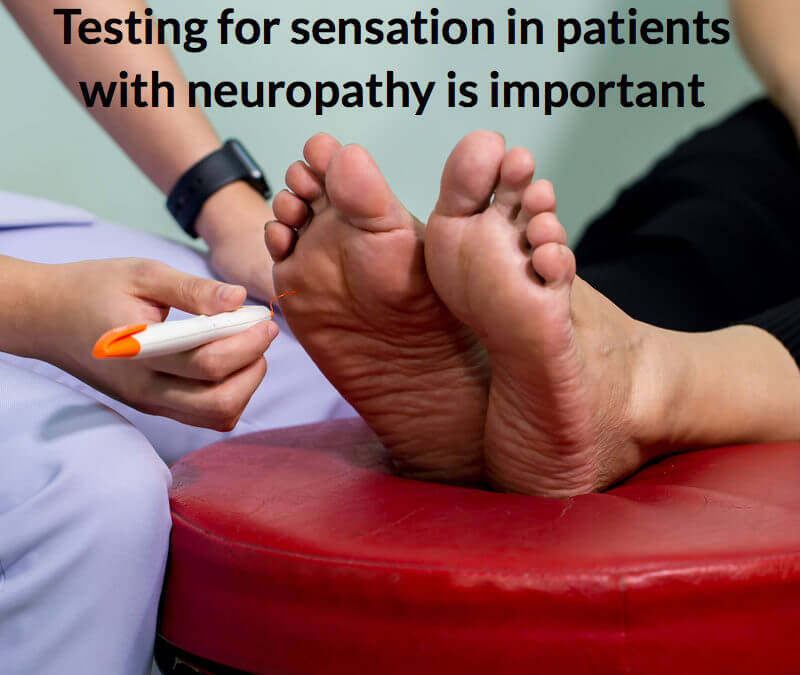
Do you recommend combination electro analgesic therapy for neuropathy in legs and feet. I have type 2 diabetes and on metformin.Symptoms appeared well before diagnosis of diabetes.
Electrotherapy has a place in treating chronic pain but neuropathy without pain is less likely to benefit. If your condition, i.e. neuropathy, was present before diabetes, you would need to discover why this was the case, as neuropathy has many causes. As you have hooked up to an article covering cancer – this is not a relevant article for your condition. Here is a link to electro-therapy – https://absoluteinjury.com/electrotherapy-in-pain-management/. I would take advice from your physician. I will put neuropathy on my list of articles unrelated to cancer